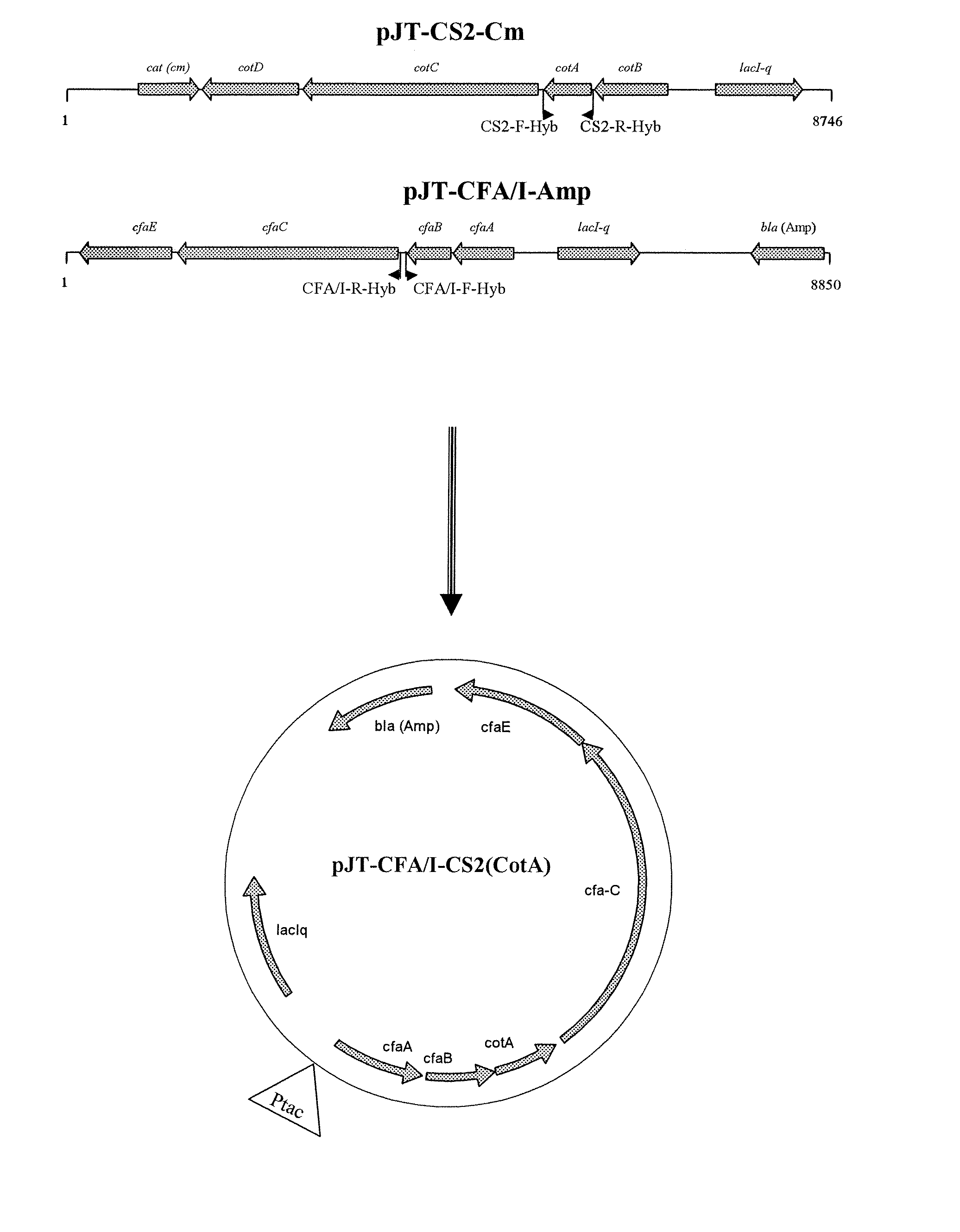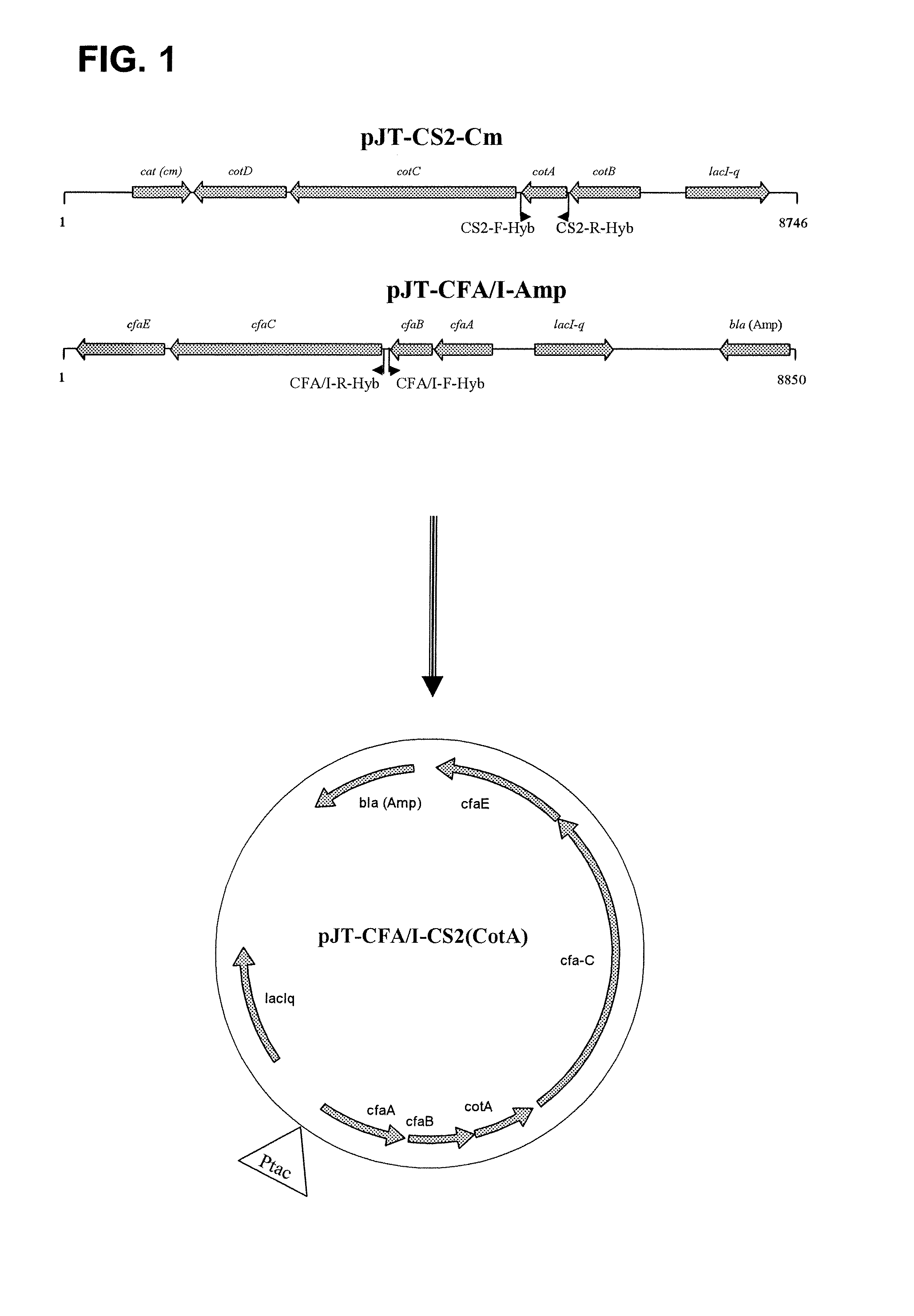Hybrid operon for expression of colonization factor (CF) antigens of enterotoxigenic escherichia coli
a technology of colonization factor and antigen, applied in the field of hybrid operon for expression of colonization factor (cf) antigens of enterotoxigenic escherichia coli, can solve the problems of low vaccine protection effect of egyptian infants, insufficient potency to protect infants living in endemic areas, and difficulty in developing an effective vaccine to protect against disease caused by
- Summary
- Abstract
- Description
- Claims
- Application Information
AI Technical Summary
Benefits of technology
Problems solved by technology
Method used
Image
Examples
example 1
[0052]Production of hybrid fimbriae: We examined the possibility of expressing a hybrid fimbriae consisting of the major subunits of both CFA / I and CS2. Construction of an expression vector expressing such hybrid fimbriae is described in materials and methods, and depicted in FIG. 1. The vector was then propagated in Top10 strain, resulting in a recombinant strain expressing a fimbriae consisting of both major subunits of CFA / I and CS2. The expression was verified by using Transmission Electron Microscopy (TEM) and specific MAbs against each of major subunits, i.e. α-CFA / I MAb (1:6)˜goat α-mouse IgG 20 mn gold and Biotinylated α-CS2 MAb (10:3)˜Streptavidin 10 nm gold.
[0053]The teachings of references cited herein are hereby incorporated in this specification by reference.
TABLE 1List of strains, plasmids, and primers used in this study.Strains, plasmidand primersRelevant characteristicSourceStrains:E. coli TOP10K12, F− lambda−InvitrogenTOP1O-CFA / I-TOP10 expressing CFA / I and CS2(cotA)...
PUM
| Property | Measurement | Unit |
|---|---|---|
| Electrical resistance | aaaaa | aaaaa |
Abstract
Description
Claims
Application Information
 Login to View More
Login to View More - R&D
- Intellectual Property
- Life Sciences
- Materials
- Tech Scout
- Unparalleled Data Quality
- Higher Quality Content
- 60% Fewer Hallucinations
Browse by: Latest US Patents, China's latest patents, Technical Efficacy Thesaurus, Application Domain, Technology Topic, Popular Technical Reports.
© 2025 PatSnap. All rights reserved.Legal|Privacy policy|Modern Slavery Act Transparency Statement|Sitemap|About US| Contact US: help@patsnap.com


